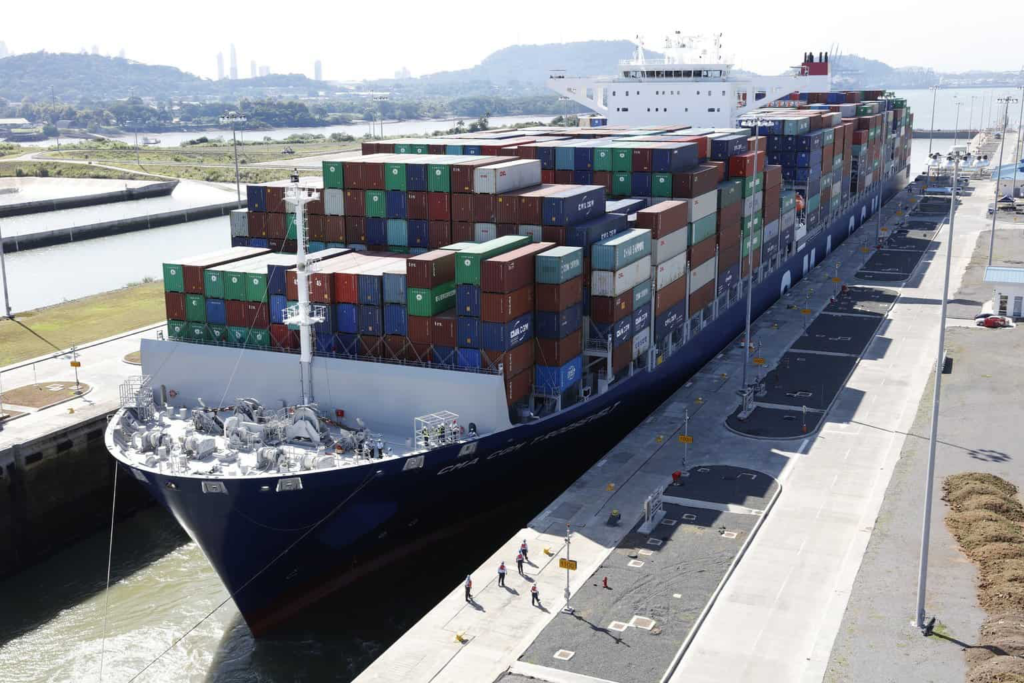March 2025
Good Morning, Good Evening, and Goodnight,
Welcome back to another market update, in this journal I’m going to talk about what innovations in supply chain, along with how AI is shaping the industry. The sole purpose for me to do this is to spark a conversation with you in the future and maybe gain perspective of your thoughts and strategies.
“Time is money”-Benjamin Franklin
In this journal I’m going to Daiiv into supply chain updates, market insights, and more into innovations. This is the third journal for 2025, and I’m excited to share that all my journals are published on my personal website: Daiviksuresh.com
A direct link to all my journals is here: CLICK ME!
Warning: Market talk ahead. This is not financial advice; most investments carry a risk of losing some or all of the invested capital.
Trade Canals & Global Flow
Panama Canal (Panama)
- Connects the Atlantic and Pacific Oceans, handling ~5% of global maritime trade and ~40% of U.S. container traffic from Asia to the East Coast (e.g., $450 billion in goods annually).
Suez Canal (Egypt)
- Links the Mediterranean Sea to the Red Sea, critical for U.S. trade with Europe, the Middle East, and Asia. About 10% of U.S. oil imports and 12% of global trade pass through here.
Kiel Canal (Germany)
- Shortens Baltic Sea-North Sea routes by 250 miles, key for U.S. exports (e.g., machinery, chemicals) to Northern Europe and imports like auto parts.
St. Lawrence Seaway (U.S./Canada)
- Connects the Great Lakes to the Atlantic via a system of locks and canals, moving $50 billion in U.S. goods annually (grain, steel, machinery)
Intracoastal Waterway (U.S.)
- A 3,000-mile network of canals and natural waterways along the Atlantic and Gulf Coasts, moving domestic cargo (fuel, chemicals, lumber) and easing port congestion.
Houston Ship Channel (U.S.)
- A 50-mile man-made canal linking Houston to the Gulf of Mexico, handling 25% of U.S. petroleum exports and 8% of total trade (~$300 billion annually).
So now that I’ve listed out these canals, what’s happening today?
Panama Canal: Environmental stress is the big story—droughts are happening but not a crisis yet, but U.S. firms are hedging with West Coast ports and rail. Blackrock is also in talks of acquiring; this could be serious news in the near future… They are down to 27 ships a day from 38, jacking up costs and delays for U.S. East Coast imports.
Suez Canal: Geopolitical chaos (Red Sea attacks) is rerouting U.S. trade, straining logistics. The U.S. military’s presence might stabilize it long-term, but not soon.
St. Lawrence Seaway: Modernization’s the focus—U.S. wants it to offset Panama/Suez risks, but it’s years out. Both countries are pouring energy into streamlining flow of goods as it is a lifeline for the Midwest. I see the St. Lawrence as a sleeper option. It’s not a full swap—Panama and Suez are ocean-to-ocean, while the Seaway’s Great Lakes-to-Atlantic—but it could take pressure off. My gut? It’s smart, but slow. The Seaway’s got potential to be a bigger player—maybe not a Panama killer, but a solid backup.
Houston Ship Channel: Expansion’s paying off—U.S. energy exports are surging, though port bottlenecks elsewhere (e.g., New Orleans) offset some gains. This handles about 25% of U.S. petroleum exports and 8% of total trade. Project 11—this massive $1 billion effort to widen and deepen the channel. They’ve been at it since 2019, and as of now, it’s 65% done. Its to let bigger ships through, which means more cargo and lower cost. As of March 2025 alone we saw 250 ships in a week, a record! Project 11’s on track for 2027 completion, and I’m betting it’ll keep surging exports.

Robotics in Supply Chain
Apptronik, an Austin-based robotics firm, has partnered with Jabil, a global leader in supply chain solutions, to test and potentially manufacture its ‘Apollo’ humanoid robot. Apollo is designed for repetitive tasks such as inspection, sorting, and fixture placement in factory settings. The collaboration aims to automate mundane tasks, allowing human workers to focus on more complex projects, potentially improving job satisfaction and reducing workplace injuries from overexertion.
Apptronik, an Austin-based robotics firm, has partnered with Jabil, a global leader in supply chain solutions, to test and potentially manufacture its ‘Apollo’ humanoid robot. Apollo is designed for repetitive tasks such as inspection, sorting, and fixture placement in factory settings. The collaboration aims to automate mundane tasks, allowing human workers to focus on more complex projects, potentially improving job satisfaction and reducing workplace injuries from overexertion.

Eventually, Apollo will be autonomous, but the team at Apptronik still wants there to be a level of control over what the robot will do. While the controls will first operate via tablets or smart devices, autonomous robots have a strong presence already in manufacturing, final assembly, and warehousing. I believe as the market for autonomous robots grows, the end-to-end supply chain operations alignment will become more fluid.
Eventually, Apollo will be autonomous, but the team at Apptronik still wants there to be a level of control over what the robot will do. While the controls will first operate via tablets or smart devices, autonomous robots have a strong presence already in manufacturing, final assembly, and warehousing. I believe as the market for autonomous robots grows, the end-to-end supply chain operations alignment will become more fluid.

If you would like to contact me, please navigate through my website, and find the best way to connect!
Sources
Future trends in supply chain
Written By: Daivik Suresh


